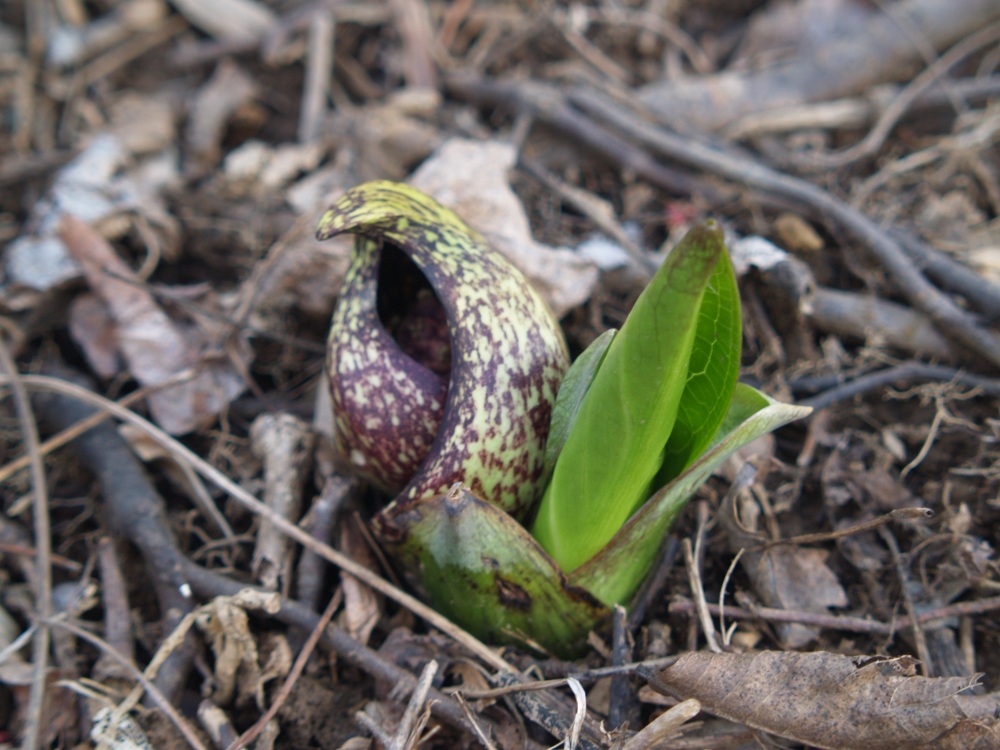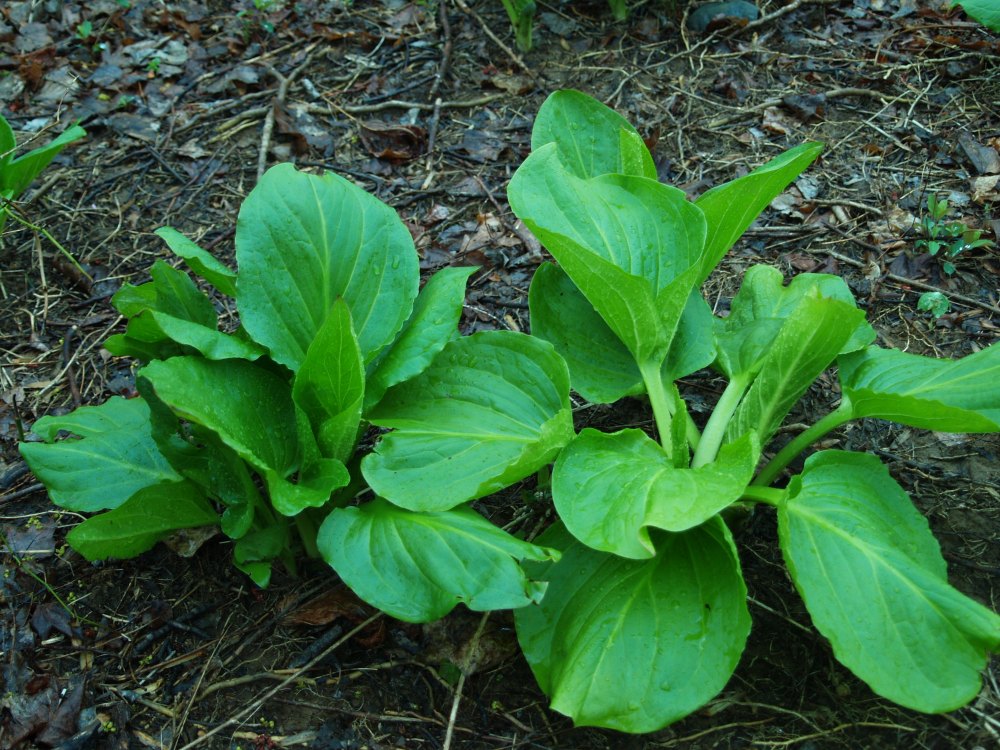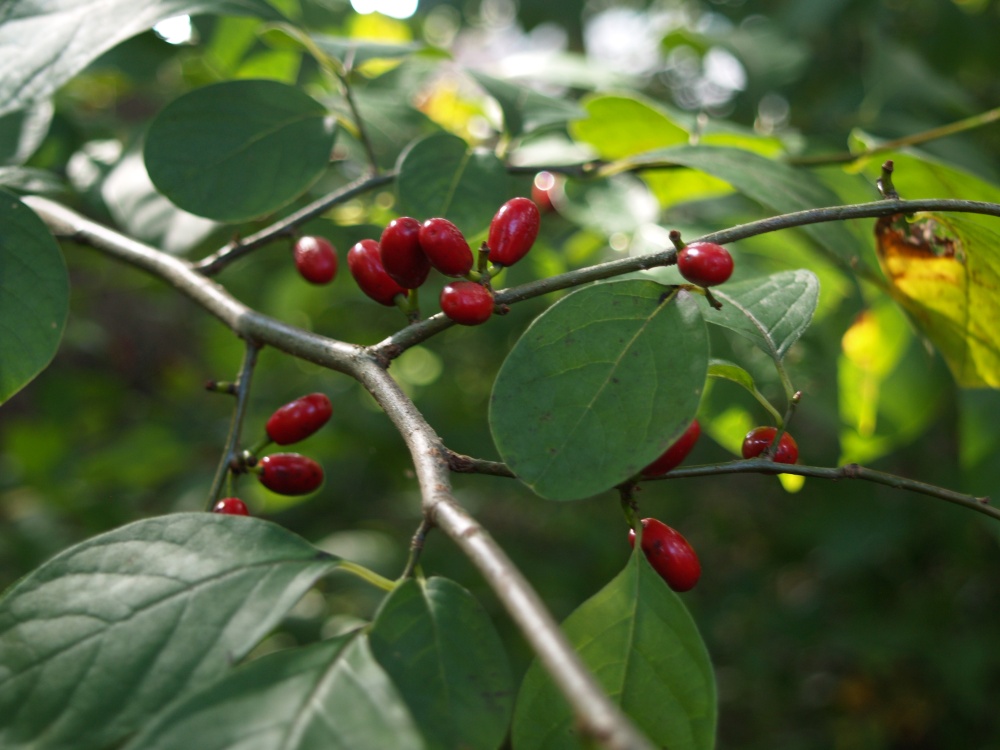
There is no more curious treasure in our damp woodlands than the skunk cabbage (Symplocarpus foetidus, flower above, foliage below). The unremarkable foliage reminds of a large leafed, green hosta, but it is the late winter flower that is most odd. The bloom is recognizable only if you know precisely where the skunk cabbages are located since it barely emerges through the soil and leaf clutter. Though I’ve seen this only in photos, the plant emits enough heat to melt small amounts of snow so that pollinators can find the flower in late winter.

I am challenged to smell just about anything, pleasant or not, so I cannot attest to it, but the scent of rotting flesh attracts flies and carrion beetles to pollinate the flower. The flower has no petals, and barely emerging from the ground it is hardly a typical bloom. But, skunk cabbage is an interesting find if you happen to have a damp spot in your native forest.

As I’ve planted native shrubs in this garden through the years, there has been no reason to plant Spicebush (Lindera benzoin, above) since the shrubs grow abundantly in this narrow section of forest. This is the primary understory shrub beneath maples and tulip poplars, and for much of the year it is an indistinct, green leafed shrub. The tiny yellow flowers catch the eye in early spring, and clusters of red berries in autumn simplify its identification.

A not so wonderful flower that is widespread in the neighboring forest is on the native red maple (Acer rubrum, below). This maple is also commonly referred to as swamp maple since it is often found in damp ground, and in fact the autumn foliage color is rarely red on native trees. Instead, the foliage turns a weak yellow that is not nearly as attractive as native Sugar maples (Acer saccharum) and many other native forest trees. The flowers are the primary source of my early spring allergies, so I would be happiest if they did not flower at all. And, a lack of flowers could eliminate the many thousands of seedlings that pop up in the garden in another month.
